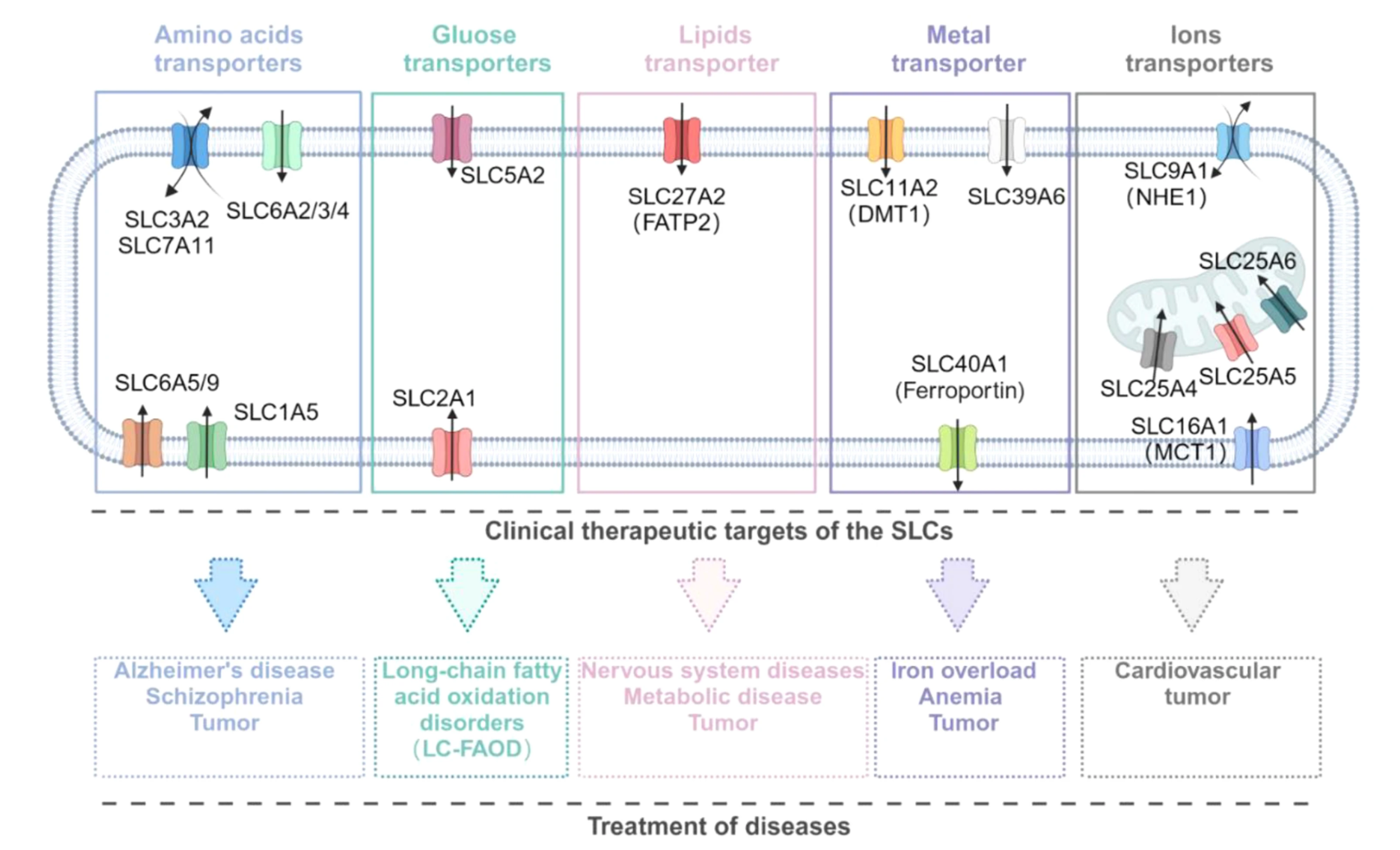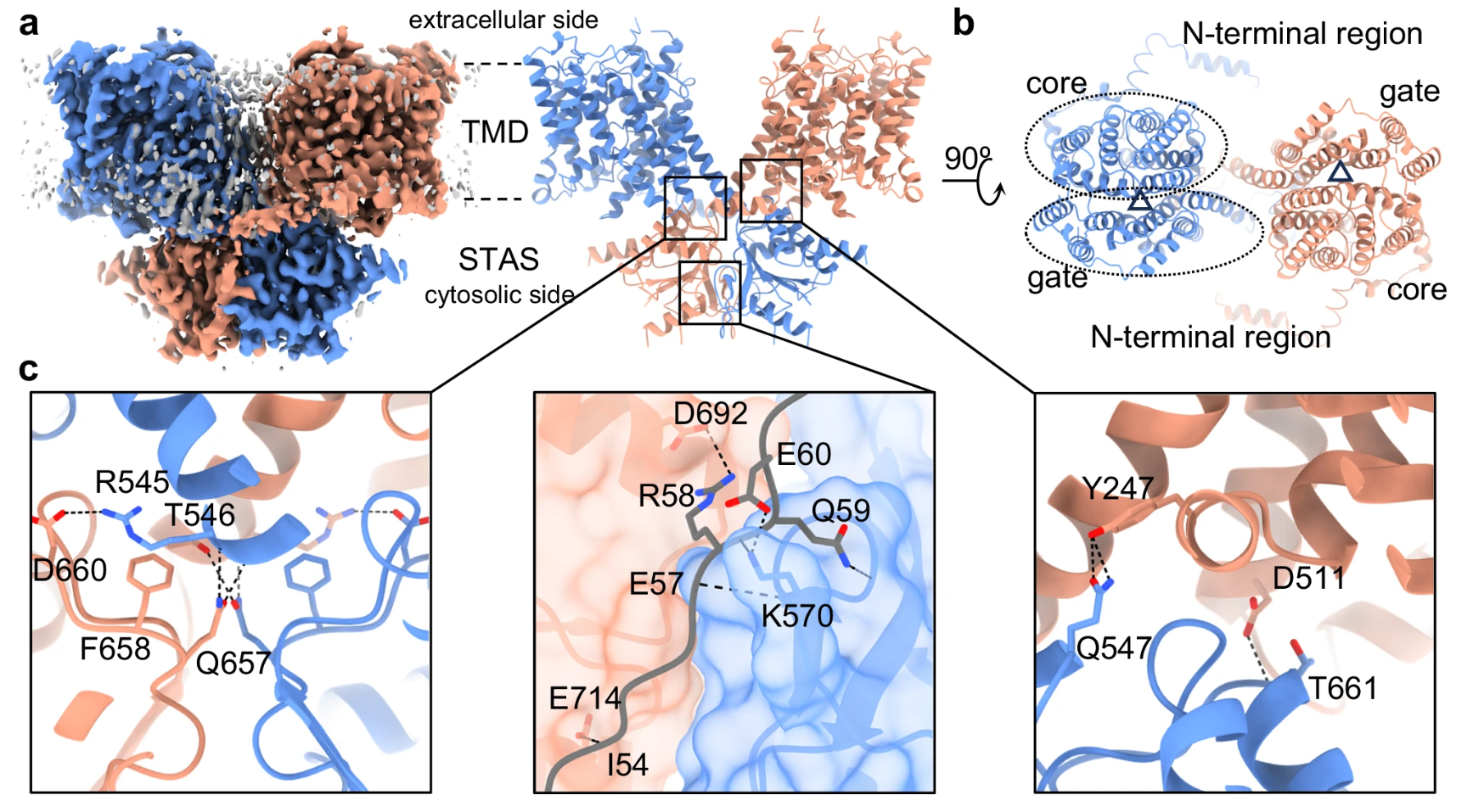Solute Carrier Transporters (SLCs) Structure Characterization Service | Cryo-EM
Solute carrier (SLC) transporters constitute the largest family of membrane transport proteins in the human genome, with over 400 members across more than 60 subfamilies. These transporters mediate the cellular uptake and distribution of a broad range of endogenous and exogenous compounds, including metabolites, nutrients, ions, and many therapeutic drugs. Due to their physiological relevance and pharmacological importance, SLCs have emerged as critical targets in drug development and disease mechanism research.

Figure 1. Potential Targets of SLCs Associated with Amino Acid, Glucose, Lipids, Metals, and Other Ion That are or Could be Used to Treat a Variety of Diseases
However, the structural characterization of SLC transporters remains challenging due to their conformational flexibility, hydrophobic transmembrane regions, and dependence on membrane lipid environments. Traditional structural biology techniques such as X-ray crystallography often fail to capture their dynamic and heterogeneous conformational states. Cryogenic electron microscopy (Cryo-EM), with its ability to visualize membrane proteins in near-native states and resolve multiple conformations, offers an unparalleled opportunity to elucidate the structural basis of SLC transporter function. MtoZ Biolabs provides a dedicated Solute Carrier Transporters (SLCs) Structure Characterization Service powered by advanced Cryo-EM.
Cryo-EM has revolutionized the study of integral membrane proteins, including transporters, channels, and receptors. By freezing samples in a thin layer of vitreous ice and capturing high-resolution images using direct electron detectors, it preserves native protein conformations without the need for crystallization. When applied to SLCs, Cryo-EM enables visualization of full-length transporters in multiple conformational states, identification of ligand-binding and ion-coordination sites, as well as structural comparison of variants—providing mechanistic insights into substrate transport and inhibitor interactions that are often inaccessible through traditional static models.
Analysis Workflow
1. Sample Preparation: Expression and purification of SLC transporters, with optional ligand or ion binding.
2. Grid Preparation: Vitrification using optimized conditions to maintain native structure.
3. Data Acquisition: Automated high-resolution image collection using direct electron detectors.
4. Image Processing: Particle picking, 2D classification, and 3D reconstruction of different conformational states.
5. Structural Modeling: Atomic model building, binding site identification, and conformational interpretation.
6. Report Delivery: Delivery of a comprehensive report, including representative micrographs, tailored structural interpretation, and other detailed information.
Service Advantages
1. Extensive Experience
Our team has deep expertise in Cryo-EM structure determination of complex membrane proteins, including a wide range of SLC subfamilies with diverse transport mechanisms.
2. Advanced Instrumentation
We operate state-of-the-art Cryo-EM platforms equipped with direct electron detectors, energy filters, and automated data collection systems to ensure high-resolution results and data consistency.
3. Customized Study Design
Whether targeting ligand-bound states, disease-associated mutants, or specific conformational intermediates, we offer flexible project configurations tailored to your research objectives.
4. One-Time-Charge
Our pricing is transparent, no hidden fees or additional costs.
Applications
1. Structure-Guided Drug Design
By resolving high-resolution transporter–ligand complexes, this service supports rational drug design through precise mapping of substrate-binding residues and interaction networks.
2. Allosteric Modulator Discovery
Through full-length structural characterization, we help identify cryptic or distal regulatory sites, enabling structure-based development of allosteric modulators that influence transporter activity.
3. Transporter-Targeted Therapy Development
Our ability to visualize intermediate and functionally relevant conformations allows researchers to target specific states in the transport cycle for selective therapeutic intervention.
4. Drug Repurposing and Resistance Analysis
This service provides structural insight into how approved drugs or mutations affect transporter interaction, guiding drug repurposing strategies and interpretation of resistance phenotypes.
Case Study
Structural Characterization of SLC26A2 Using Cryo-EM
As a critical member of the SLC family, SLC26A2 mediates sulfate uptake and is implicated in a range of genetic disorders caused by pathogenic mutations. A study successfully applied Cryo-EM to resolve three high-resolution structures of the human sulfate transporter SLC26A2 in complex with different substrates. The study revealed insights into its dimeric assembly, dynamic substrate-binding sites, and the structural impact of pathogenic mutations. These insights advance the mechanistic understanding of sulfate transport and lay the groundwork for future therapeutic strategies targeting SLC26A2-associated diseases. This case highlights the value of Cryo-EM in capturing multiple functional states of SLC transporters and illustrates how high-resolution structural data can inform both basic research and disease-focused drug development.

Figure 2. The Overall Structure of SLC26A2 Homodimer
FAQ
Q1: What types of SLC transporters can be studied with Cryo-EM?
A1: We can analyze a broad range of SLC families, including glucose transporters (SLC2), organic anion transporters (SLC22), amino acid transporters (SLC7), and many others.
Q2: Is this service applicable to SLC–drug complex structures?
A2: Absolutely. We support ligand-bound structure determination for structure-based drug design or selectivity profiling.
High-resolution structural characterization of solute carrier transporters is critical for understanding their function, pharmacological potential, and disease associations. Through MtoZ Biolabs' Solute Carrier Transporters (SLCs) Structure Characterization Service, clients gain access to actionable insights that accelerate transporter-targeted research and therapeutic development. To learn more or discuss your project, contact us today.
How to order?







